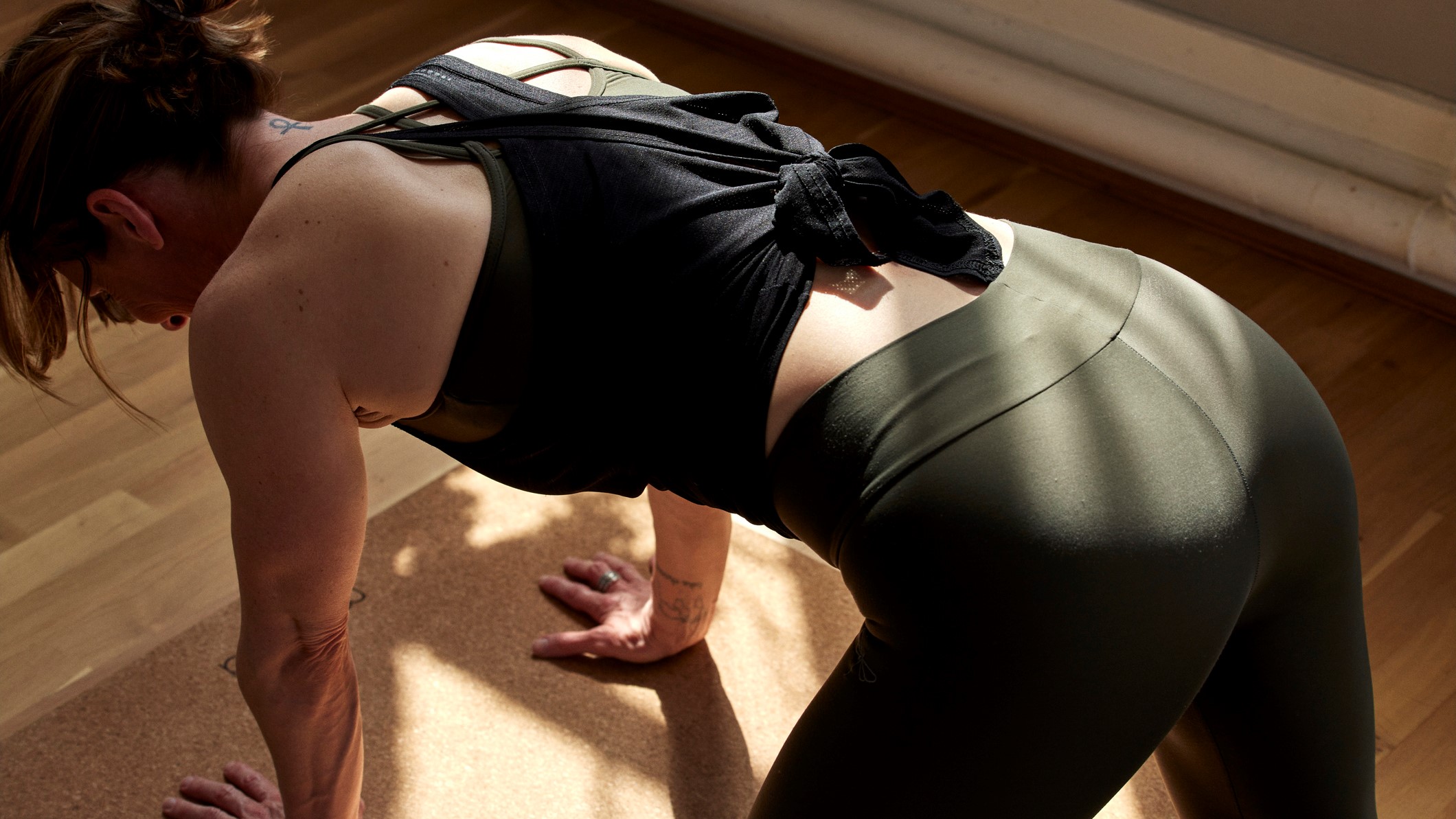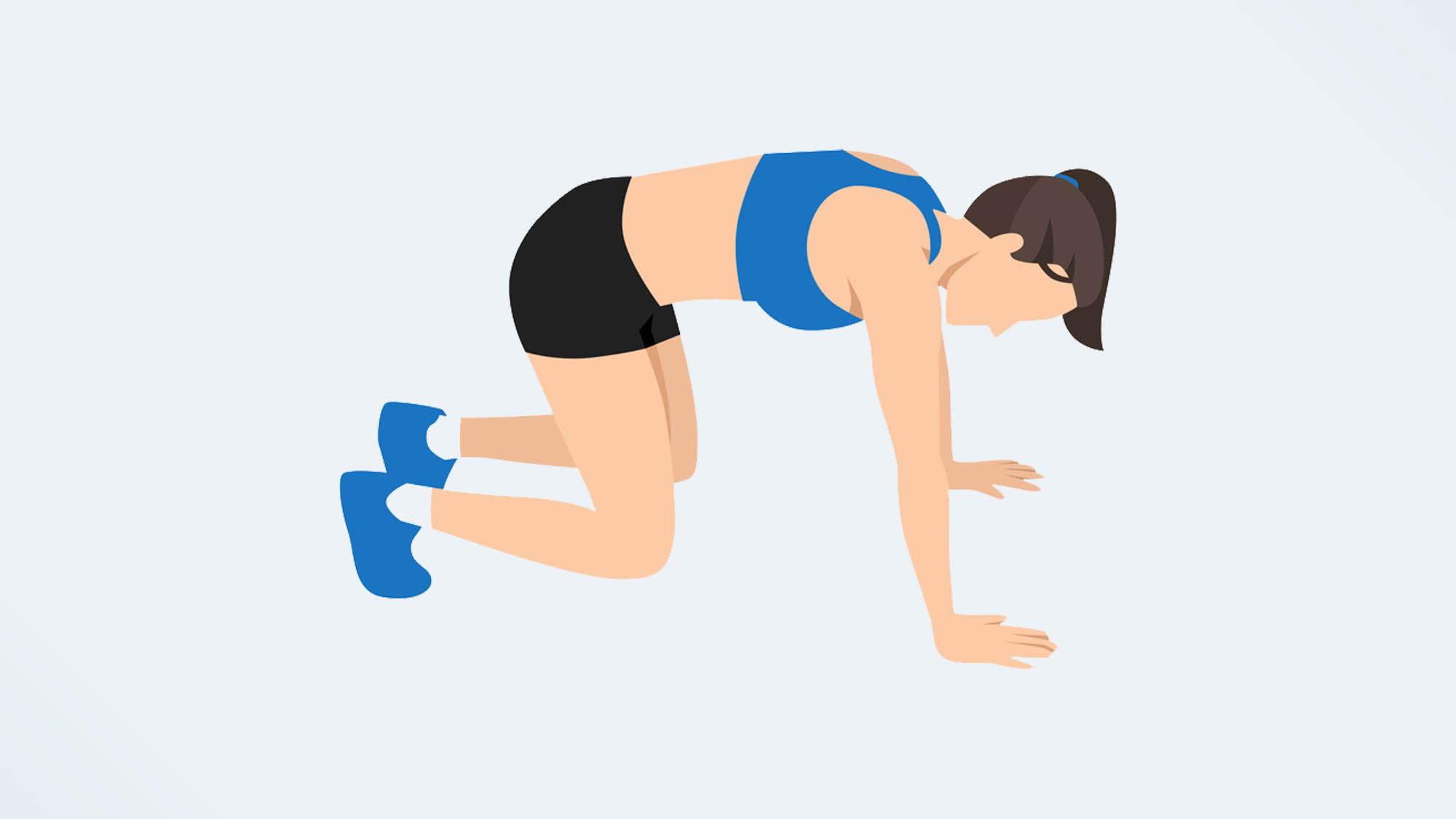I did bear planks every day for a week — here’s my results
You've got to try this plank variation

When it comes to working your core, not all ab exercises are created equal. That said, one that gets you an awful lot of bang for your buck is the bodyweight plank, and here at Tom’s Guide, we love nothing more than exploring the benefits of the humble plank, in all its variations.
Up this week — the bear plank. A bodyweight exercise that focuses on working your mid-section, namely the internal and external obliques, the deep transverse abdominis, and the outer rectus abdominis (or six-pack muscles). But what would happen to your core if you did bear planks every day for a week? To find out more, I unrolled my best yoga mat, and got to work.
As a reminder, what works for me might not be right for you and your body — if you’re new to exercise, or you’re returning to exercise following an injury, it’s a good idea to check your form with a personal trainer before adding reps. It’s also not recommended to train one muscle group every single day — normally, I’d do two core sessions per week, but for this experiment, I added bear planks to my routine every day.
How to do a bear plank
Let’s start by taking a closer look at how to do a bear plank:
- Start on all fours on your hands and knees. Make sure your hands are stacked underneath your shoulders, and your knees are under your hips.
- Press into the ground and engage your core and glutes — think about squeezing your belly button into your spine. Tuck your tailbone slightly to engage your glutes, while keeping your back straight.
- Lift your knees about an inch off the ground. Keep your head and neck in a neutral position, and your eye gaze down to the floor.
- Avoid arching your back — keep your core engaged throughout the exercise.
- Hold the position for 30-60 seconds. If you’re a beginner, start with 20 seconds and build up.

This is an intermediate-level ab exercise. If it’s too difficult, shorten the time your knees are lifted off the floor. You can also start by keeping your knees on the floor and bracing your core for a few seconds, then releasing — this will help you work on the muscles needed for the full bear plank.
I did bear planks every day for a week — here are my results
Ready to find out what happened when I added bear planks to my routine for a week? Here’s my training diary after seven days of bear planks:
Day 1
As always, I went into this challenge not knowing what to expect. While forearm planks and high planks are a regular part of my ab exercise routine, I’m pretty new to bear planks. That said, I’ve come to dread the bear crawl as a bodyweight finisher, so I knew this one wouldn’t be a walk in the park.
Sign up to get the BEST of Tom's Guide direct to your inbox.
Get instant access to breaking news, the hottest reviews, great deals and helpful tips.
I decided to start off with a 60-second bear plank, and repeat this three times, with a minute off in-between, making it a five-minute ab workout. 30 seconds into my first bear plank, my core was shaking — this one was really working my deep core muscles.
Day 2
“Do bears have abs?” I questioned 20 seconds into my bear planks on day two. Bear planks felt harder than my normal bodyweight planks, as the nature of the move forces you to keep your core engaged throughout to hold the position. The power of this move is in staying as still as possible — don’t let your head move around, and focus on keeping your hips still throughout the exercise.
Days 3 and 4
On days three and four, I decided to increase the intensity, by adding one of the best resistance bands. Looping the mini-band around my lower thighs, just above my knees, the added band forced me to focus on bracing my legs against the band, while still squeezing my glutes and core. This turned the move into a lower-body workout, as well as an abdominal one.
In addition to being relatively inexpensive, resistance bands are a great training tool. When using a resistance band, your muscles are pushing against the band to keep it stretched — this force works your muscles like weights or machines in the gym. Using a resistance band can also increase the time your muscle spends under tension because your muscles have to stay engaged to keep the band in place.
One study found that using resistance bands provides similar results to using conventional gym equipment. Read more about how resistance bands work here.
Day 5
On day five, I returned to my normal, bodyweight bear planks, but added shoulder taps, adding more of an upper body burn to the workout. This really made me shake, as I hard to work hard to keep my hips steady. For the final set, I did shoulder taps and added an arm reach. In a word, ouch.
Day 6
On day six, I decided to make things harder again by doing bear plank leg lifts. For this variation, hold a bear plank, then slowly raise one foot, then the other, off the floor for 2-3 seconds. Keep alternating between legs for the entire 60 seconds.
I found this simple switch made things much harder, as my core had to work to stabilize my hips.
Day 7
On day seven, I did my most hated move — bear crawls. I did 60 seconds, taking five steps in one direction, then the other until my timer went off. This made day seven by far the worst day of the week — bear crawls engage all of your major muscle groups, while also raising your heart rate. Your core also has to work hard to prevent your body from twisting or turning during the move.
My verdict after seven days? Bear planks are an excellent plank variation when it comes to blasting your core. I’ll definitely be working them into my ab routines in the future. Of course, there were no visible differences to my ab muscles after a week of bear planks, but my core felt like it had gotten a good workout. Remember, if visible abs are your goal, you’ll need to focus on your body fat percentage, not doing endless planks — here’s how to calculate your body fat percentage, and why it matters.
More from Tom's Guide

Jane McGuire is Tom's Guide's Fitness editor, which means she looks after everything fitness related - from running gear to yoga mats. An avid runner, Jane has tested and reviewed fitness products for the past five years, so knows what to look for when finding a good running watch or a pair of shorts with pockets big enough for your smartphone. When she's not pounding the pavements, you'll find Jane striding round the Surrey Hills, taking far too many photos of her puppy.
